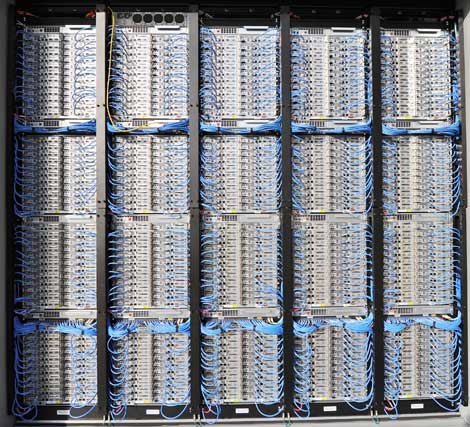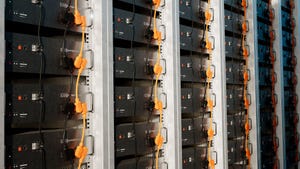Microsoft Will Use Fuel Cells to Create Self-Powered RacksMicrosoft Will Use Fuel Cells to Create Self-Powered Racks
Microsoft wants to bring power generation inside the rack, and make data centers cheaper and greener in the process. The company says it will test racks with built-in fuel cells, a move that would eliminate the need for expensive power distribution systems seen in traditional data centers.
November 12, 2013


ITPAC-Servers-470
Will these Microsoft racks soon include fuel cells? The company has outlined a plan to integrate methane-based fuel cells directly into racks. (Photo: Microsoft Corp.)
Microsoft wants to bring power generation inside the rack, and make data centers cheaper and greener in the process. The company says it will test racks with built-in fuel cells, a move that would eliminate the need for expensive power distribution systems seen in traditional data centers.
In a new white paper, Microsoft researchers say the use of methane-powered fuel cells at the rack level offers the greatest efficiency and savings. It's a new twist on the convergence of data centers and renewable power, which has seen eBay use fuel cells as a building-level power source in its Utah server farm, eliminating the need for UPS units and generators. Microsoft says integrating fuel cells directly into data center racks can eliminate power distribution systems and even server-level power supplies, dramatically reducing energy loss.
This approach builds on Microsoft's goal of creating “data plants” that operate with no connection to the utility power grid. The company is deploying a proof of concept in Cheyenne, Wyoming featuring a modular data centers housed at a water treatment plant. This waste-powered data center will use electricity from a fuel cell running on methane biogas from the plant.
Microsoft now wants to take this a step further. Using a rack-level fuel cell can "collapse the entire energy supply chain, from the power plant to the server motherboard, into the confines of a single server cabinet," said Sean James, Senior Research Program Manager for Microsoft Global Foundation Services.
"The main distinction between this data plant concept and previous architecture ideas is the notion of bringing the power plant inside the data center, instead of putting the data center in the power plant," James writes in a blog post. "A lot of energy is lost in today’s data center energy supply chain. We show how integrating a small generator with the IT hardware significantly cuts complexity by eliminating all the electrical distribution in the grid and data center."
James said Microsoft is in the "early stages" of exploring the concept, but believes this design could improve efficiency, reduce the total cost of operating a data center, and improve reliability by distributing risk. If a fuel cell fails, it would affect only one rack rather than an entire data center.
"We plan to install a fuel cell with servers to get first-hand measurements," said the white paper.
The Microsoft team explored several approaches to incorporating fuel cells into data centers, evaluating the cost and efficiency of using them at the utility power level and even at the server level. Using fuel cells to replace the utility feed improves efficiency, but allows a failure to affect the entire data center. Small fuel cells can be integrated into servers, eliminating the need for power cabling, but this approach isn't cost effective.
Integrating fuel calls into racks eliminates the need for power infrastructure - including UPS units, generators and switch gear - by replacing it with gas pipes to distribute fuel. This approach would also cost more to cool. Microsoft estimates this design would reduce capital expenses by 16 to 2o percent, while cutting operating costs by 3 percent or more.
"Having fuel cells close to the servers makes direct DC power distribution possible," the researchers write. "This can also eliminate the AC power supply unit in servers, currently used to convert AC input to internal DC power."
"We see tremendous potential in this approach, but this concept is not without challenges," said James. "Deep technical issues remain, such as thermal cycling, fuel distribution systems, cell conductivity, power management, and safety training that needs to be further researched and solutions developed. But we are excited about working to resolve these challenges.
About the Author
You May Also Like







